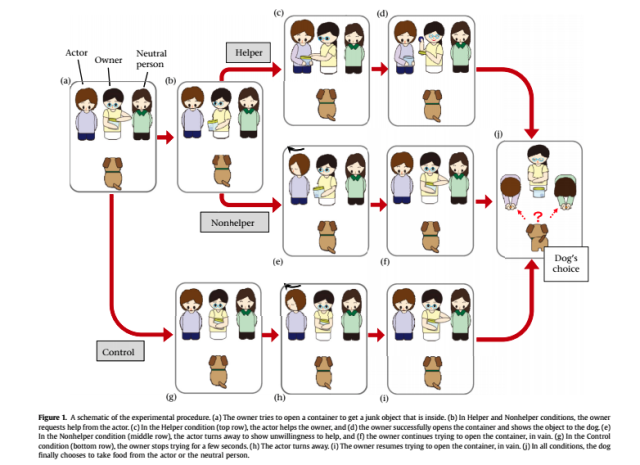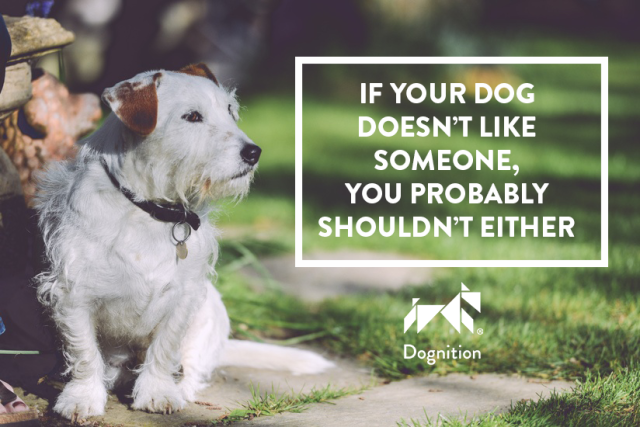If you think your dog is a good judge of character, your canine might be using “social eavesdropping” as a tool to decide who to be nice to and who to ignore. Social eavesdropping in scientific terms is “social evaluation of third-party interactions”…so you know, what us laypeople call “people watching.”
Researchers out of Japan, Chijiiwa et al. (2015), show that dogs use social eavesdropping to avoid people who have behaved negatively to their human. Past research studies show that human infants also display this behavior. Infants, as young as 3-months-old, when shown a puppet show where one character is helpful and another is not will choose to play with the helpful puppet much more frequently.
The Subjects
In this study, 54 dogs and their humans participated. Dogs were of various breeds and age ranged from 7-months to 14-years-old. The researchers randomly divided the participants into 3 groups of 18. The two experimental groups were Helper and Nonhelper. There was also a Control group. Each group had 9 female and 9 male dogs.
The Test

Follow along with Figure 1 (above) as a visual guide to the procedure that is about to be described: In all 3 groups, the set-up has the dog facing his or her owner. The owner is between an actor and a neutral person, and is in possession of a cylindrical, transparent container that has a roll of vinyl tape inside. The researchers chose a roll of vinyl tape as the object because they wanted an object that dogs wouldn’t be interested in. Upon a cue from the researcher, the owner would try to open the container for 8-10 seconds of failed attempts.
In the Helper condition, the owner would turn to the actor for help. The actor would hold the bottom of the container and the owner would successfully take the lid off, show the dog the roll of tape, place the tape back in the container, and put the lid back on. The lid was put back on so that the end condition was the same as the “Nonhelper” condition. It should be noted that the owner showed the dog the tape with a happy smile, while in the next two conditions, the owner’s face was neutral.
In the Nonhelper condition, the owner would turn to the actor for help. In response, the actor would turn away for 1-2 seconds to show her unwillingness to help. The owner would continue to try to open the container but continue to fail. He or she would then place the container in front of him or her.
In the Control condition, after the 8-10 seconds of failed attempts, the owner put the container on the table in front of him or her.
Then, in all conditions, the owners would immediately close their eyes as not to give any cues. The actor and neutral person would look down and extend both arms forward. On their palms would be a piece of the dog’s favorite food.
Each dog did four trials in the same condition. The left-right positions of actor/neutral person were switched across trials and on the first trial across individuals.
The Take Home
The researchers found that dogs, after witnessing the actor being uncooperative towards their owner, preferred to avoid this unhelpful, mean person and interact with the neutral person instead. In comparison, they found no significant difference between the Helper and Control conditions; the dogs equally interacted with the helpful and the neutral person. Could this mean that our dogs are judging the company that we keep? Hmm.
The researchers also found that dogs do not get better at social eavesdropping as they get older; age did not correlate with the dogs’ choices.
So it seems that actions speak louder than words to dogs too. Another reminder to be helpful, to be kind…because someone’s dog is watching! To learn more about how your dog thinks, go to Dognition and connect with your furry best friend on a whole new level.



